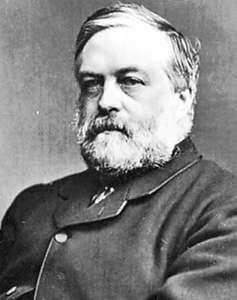CHARLES WYVILLE THOMSON AND THE CHALLENGER EXPEDITIONScotland, while a small country with a relatively small population has produced a surprisingly large number of scientists. Given all the work currently being done on the ocean and its interaction with the atmosphere, it is interesting to note that the beginnings of oceanology start with the Challenger Expedition headed by a Scot - Charles Wyville Thomson (5 March 1830 – 10 March 1882) a naturalist with an interest in the ocean and ocean life.  Thomson headed up the Challenger Expedition, a major expedition to examine the ocean and organisms that lived within it. The expedition (1872-1876) circumnavigated the globe and traveled some 68,890 nautical miles and is considered the beginnings of the science of oceanography. Thomson was professor at the University of Edinburgh and the Merchiston Castle Schools. The Royal Society of London had obtained the vessel, the Challenger from the Royal Navy. This was refitted for scientific work. The fifty volumes of the reports of the expedition were published sequentially and the last volume was published in 1885. As a result over 4,000 heretofore unknown species had been discovered and cataloged. Reports documented information about the physical condition of the deep ocean as far as the edge of the ice barrier near Antarctica. Thomson and the scientists with him were interested in the depth, circulation, depth of light penetration and other chemical and physical aspects of the ocean. There were many beliefs at that time that were proven false. For example, people thought that the water became denser and denser as one went deeper and deeper into the water to the point where the water would be so compressed that ships could not sink to the bottom, but would in effect become “buoyant” at some depth and would “float” forever at that depth. As late as the sinking of the Titanic some people still believed that the Titanic had not gone to the bottom but was trapped in dense water above the bottom at which level the ship continued to “sail”. There was also a belief in scientific circles that there was some sort of Urschleim – a sort of primordial slime that was the origin of protoplasm that biologist Thomas Huxley named Bathybius haeckelii. Although it was argued this material was found almost everywhere none was found by the Challenger in any of the materials brought out of the ocean. John Young Buchanan another Scott was a member of the expedition as well and served as the chemist. He discovered that the Urschleim was actually a precipitate of calcium sulfate, which occurred when sea water interacted with the alcohol which was used to preserve specimens. As the vessel traveled around the world, it made 492 deep-sea soundings. At one of them, they discovered the deepest part of the ocean, now known as the Challenger Deep, a part of the Mariana Trench in the Pacific Ocean. |